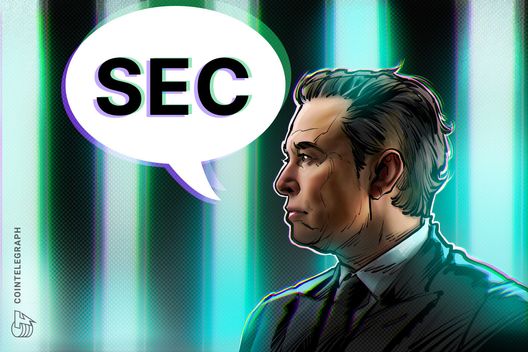
Das Zeus Network hat mit zBTC einen neuen permissionless Bitcoin-Token auf Solana eingeführt.

Finanzmittel Info + Krypto + Geld + Gold
Krypto minen, NFT minten, Gold schürfen und Geld drucken

Das Zeus Network hat mit zBTC einen neuen permissionless Bitcoin-Token auf Solana eingeführt.
The US Federal Deposit Insurance Corporation (FDIC) announced on Friday, March 28, 2025, that it is rescinding previous guidance requiring banks to notify the agency before engaging in crypto-related activities.
It is a fresh approach under the President Donald Trump’s administration, one that aims to streamline how financial institutions interact with digital assets and blockchain technology.
The US banking agency’s about turn means banks and other supervised financial institutions do not need to report their current and planned crypto-related activities. Previously, this was the case, with the FDIC citing potential risks to the stability of the U.S. banking system. The guidance was in the regulator’s Financial Institution Letter (FIL-16-2022), issued in April 2022.
However, the new guidance eliminates this requirement, allowing FDIC-supervised banks to pursue permissible crypto-related activities without prior agency approval.
“The FDIC is rescinding FIL-16-2022 and providing new guidance to clarify that FDIC-supervised institutions may engage in permissible crypto-related activities without receiving prior FDIC approval,” reads a statement from the FDIC.
The decision reflects a broader push to adapt regulatory frameworks to the evolving digital asset landscape while maintaining oversight to ensure financial stability. The agency emphasized that while banks are now free to explore these activities independently, they must still adhere to existing safety and soundness principles—a balance intended to foster innovation without compromising the integrity of the banking system
“With today’s action, the FDIC is turning the page on the flawed approach of the past three years,” said FDIC acting chairman Travis Hill. “I expect this to be one of several steps the FDIC will take to lay out a new approach for how banks can engage in crypto- and blockchain-related activities in accordance with safety and soundness standards.”
The announcement is one of positive crypto events today, with this coming after Trump’s pardoning of three co-founders of BitMEX crypto exchange.
The post FDIC rescinds policy that hindered banks’ crypto participation appeared first on CoinJournal.

Nachdem Elon Musk mit seinem DOGE-Team bereits gegen andere Behörden vorgegangen ist, gerät nun die US-Börsenaufsicht ins Fadenkreuz der Effizienzbehörde.

Über 200.000 US-Dollar an Krypto-Geldern, die zur Hamas fließen sollten, wurden vom DOJ beschlagnahmt.
The European Union’s insurance regulator, European Insurance and Occupational Pensions Authority (EIOPA), has proposed a new rule that would require crypto insurers to hold capital reserves equal to the full value of their cryptocurrency investments.
Unveiled by the EIOPA in a technical report submitted to the European Commission on March 27, 2025, this proposal seeks to shield policyholders from the wild swings and uncertainties tied to digital assets.
With cryptocurrencies like Bitcoin (BTC) and Ethereum (ETH) known for their rollercoaster price movements, EIOPA is taking no chances, advocating for a 100% capital charge that far exceeds the requirements for traditional investments like stocks or real estate.
Cryptocurrencies have surged in popularity over the past decade, drawing in everyone from casual investors to major institutions. However, their appeal comes with a catch: extreme volatility.
For instance, BTC has weathered price drops as steep as 82% in a single year, while ETH has seen declines of up to 91%.
Such dramatic shifts have prompted regulators to act, and EIOPA’s latest proposal is a direct response to these risks.
By requiring insurers to set aside capital matching the entire value of their crypto holdings, the watchdog aims to ensure that firms can absorb a total loss if the market crashes, protecting the millions of policyholders who rely on their stability.
Notably, this 100% capital requirement stands out when compared to the rules for more familiar asset classes. Stocks, for instance, typically carry a capital charge of 39–49%, meaning insurers must hold less than half their value in reserve. Real estate is even lighter, requiring just 25%.
Cryptocurrencies, however, are in a league of their own, according to EIOPA, which points to historical data showing severe price drops even in well-known assets like BTC and ETH.
Unlike stocks or property, crypto assets don’t benefit from diversification, leaving insurers fully exposed to their unpredictable nature—a risk the regulator isn’t willing to overlook.
The decision to impose a 100% capital charge didn’t come lightly. EIOPA weighed several options, including sticking with the current patchy rules or adopting an 80% stress level akin to what’s used for intangible assets.
Another idea was a “look-through” approach for tokenized assets, where the capital charge would reflect the underlying asset’s risk.
But with the crypto market still young and data scarce, compounded by the early stages of the EU’s Markets in Crypto-Assets Regulation (MiCA), EIOPA opted for the most cautious path. The 100% requirement, it argues, is the safest bet until more clarity emerges, though it’s open to revisiting this stance as the market matures.
Notably, EIOPA’s proposal doesn’t exist in isolation—it echoes the approach taken in the banking sector. Under the Capital Requirements Regulation (CRR), banks face a similar 100% stress test for certain crypto assets during a transitional period.
The move brings insurers in line with this, creating a unified front across EU financial sectors. It also plugs a gap left by MiCA, which offers a broad framework for crypto-assets but lacks specific guidance for insurers.
By aligning these regulations, the EU is signaling a coordinated effort to tame the risks of digital currencies while fostering a stable financial environment.
Not everyone is on board with EIOPA’s tough stance. During consultations, some stakeholders argued that a blanket 100% requirement is too harsh, ignoring the differences between volatile cryptocurrencies and more stable tokenized assets.
Critics say this one-size-fits-all approach could stifle innovation or deter insurers from exploring digital markets.
On the flip side, supporters applaud the caution, pointing to the crypto market’s history of sudden crashes and scandals.
EIOPA has heard both sides but insists that, for now, prudence trumps flexibility—though it’s left the door open for future tweaks as more data rolls in.
If the European Commission greenlights this proposal, it could reshape how insurers approach cryptocurrencies.
The high capital cost might discourage significant holdings, at least until the market stabilizes or the rules soften.
Beyond insurers, the decision could ripple outward, influencing how other regulators worldwide handle digital assets in finance.
The post EU watchdog proposes full capital reserves for crypto insurers’ holdings appeared first on CoinJournal.